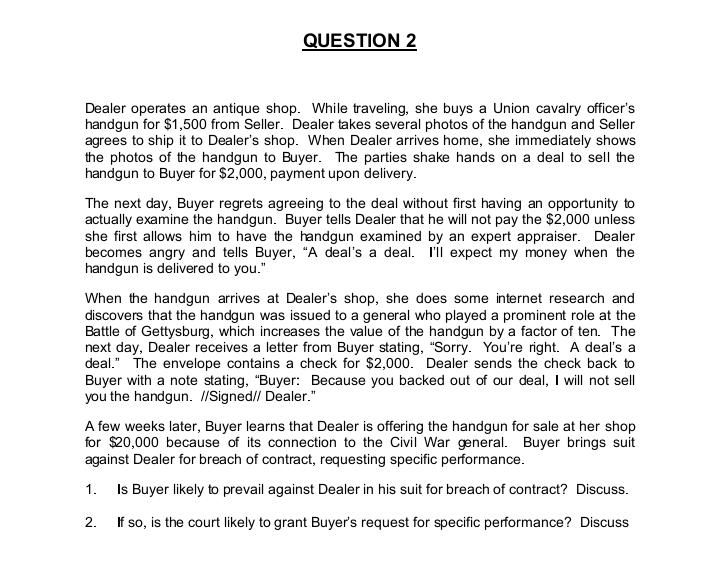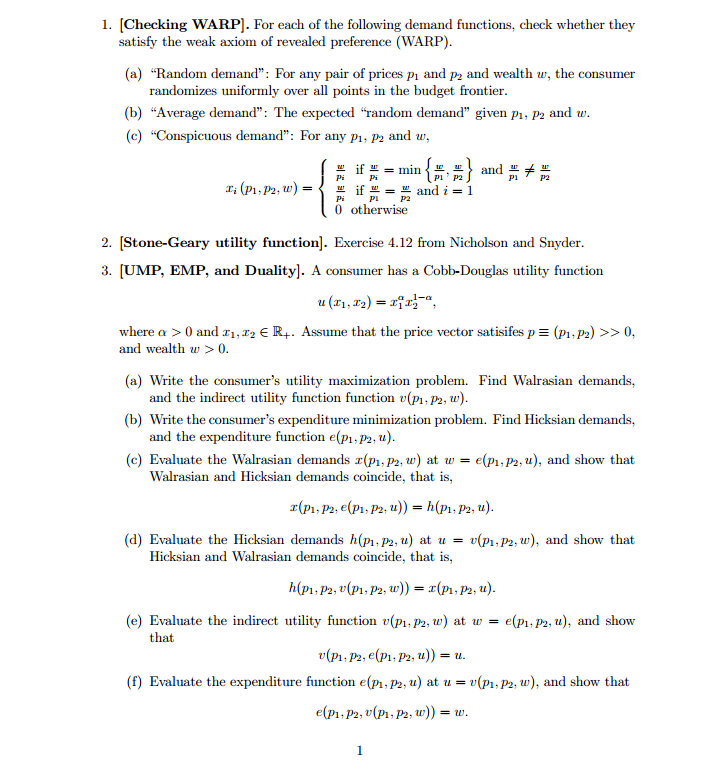Well shown answers
QUESTION 2 Dealer operates an antique shop. While traveling, she buys a Union cavalry officer's handgun for $1,500 from Seller. Dealer takes several photos of the handgun and Seller agrees to ship it to Dealer's shop. When Dealer arrives home, she immediately shows the photos of the handgun to Buyer. The parties shake hands on a deal to sell the handgun to Buyer for $2,000, payment upon delivery. The next day, Buyer regrets agreeing to the deal without first having an opportunity to actually examine the handgun. Buyer tells Dealer that he will not pay the $2,000 unless she first allows him to have the handgun examined by an expert appraiser. Dealer becomes angry and tells Buyer, "A deal's a deal. I'll expect my money when the handgun is delivered to you." When the handgun arrives at Dealer's shop, she does some internet research and discovers that the handgun was issued to a general who played a prominent role at the Battle of Gettysburg, which increases the value of the handgun by a factor of ten. The next day, Dealer receives a letter from Buyer stating, "Sorry. You're right. A deal's a deal." The envelope contains a check for $2,000. Dealer sends the check back to Buyer with a note stating, "Buyer: Because you backed out of our deal, I will not sell you the handgun. //Signed// Dealer.' A few weeks later, Buyer learns that Dealer is offering the handgun for sale at her shop for $20,000 because of its connection to the Civil War general. Buyer brings suit against Dealer for breach of contract, requesting specific performance. 1. Is Buyer likely to prevail against Dealer in his suit for breach of contract? Discuss. 2. If so, is the court likely to grant Buyer's request for specific performance? Discuss1. [Checking WARP]. For each of the following demand functions, check whether they satisfy the weak axiom of revealed preference (WARP). (a) "Random demand": For any pair of prices p, and p2 and wealth w, the consumer randomizes uniformly over all points in the budget frontier. (b) "Average demand": The expected "random demand" given p1, p, and w. (c) "Conspicuous demand": For any p1, p2 and u, if w = min . m, mand u * I (P1, P2, w)= if m = w and i = 1 otherwise 2. [Stone-Geary utility function]. Exercise 4.12 from Nicholson and Snyder. 3. [UMP, EMP, and Duality]. A consumer has a Cobb-Douglas utility function u (11, 12) = 1715-, where a > 0 and $1, 12 6 Ry. Assume that the price vector satisifes p = (p1, p2) > > 0, and wealth w > 0. (a) Write the consumer's utility maximization problem. Find Walrasian demands, and the indirect utility function function v(P1, pz, w). (b) Write the consumer's expenditure minimization problem. Find Hicksian demands, and the expenditure function e(p1, p2, "). (c) Evaluate the Walrasian demands r(p1, pz, w) at w = e(p1, p2, u), and show that Walrasian and Hicksian demands coincide, that is, r(PI, P2, e(P1, p2, u)) = h(p1. pz, u). (d) Evaluate the Hicksian demands h(p1, pz, u) at u = v(p1, p2, w), and show that Hicksian and Walrasian demands coincide, that is, h(p1, p2, v(p1, pz, w)) = (P1, p2, u). (e) Evaluate the indirect utility function v(p1, pz, w) at w = e(p1, pz, u), and show that v(P1. pz, e(P1, pz, u)) = u. (f) Evaluate the expenditure function e(p1, p2, u) at u = v(p1, pz, w), and show that e(P1 . P2, v(P1, P2, w)) = w.4. [Choosing between two types of labor.] Consider an individual who is endowed with one unit of time which can be allocated to leisure () or to either of two types of labor. Generally, the person uses its labor income to purchase consumption goods c at the price p. The first type of labor, Li, pays a lower wage (wj ) but is easier to perform, whereas the second type, L2, pays a higher wage (we > wi) but is more difficult. The person's preferences are given by the strictly concave utility function u(c, I, L1, L2) where the partial derivatives are u. > 0, up > 0, and up; un, implying that, since up;









